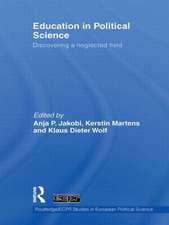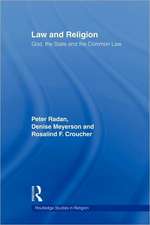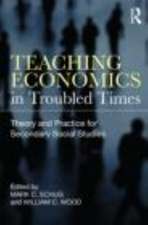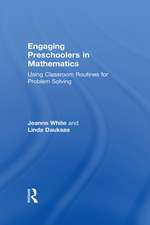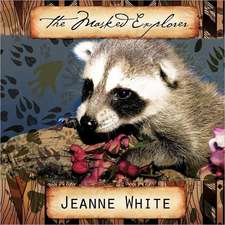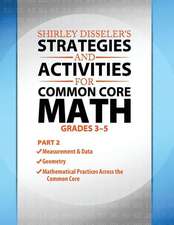Using Children's Literature to Teach Problem Solving in Math: Addressing the Standards for Mathematical Practice in K–5
Autor Jeanne Whiteen Limba Engleză Paperback – 12 aug 2016
You’ll find out how to:
- Encourage students to persevere in solving mathematical problems and use multiple approaches to find the answer;
- Help students reason abstractly with the aid of concrete objects and visuals;
- Guide students in constructing arguments to explain their reasoning and engage in critical discussion with their peers;
- Teach students to recognize mathematical patterns and use them to solve problems efficiently;
- And more!
| Toate formatele și edițiile | Preț | Express |
|---|---|---|
| Paperback (1) | 232.10 lei 43-57 zile | |
| Taylor & Francis – 12 aug 2016 | 232.10 lei 43-57 zile | |
| Hardback (1) | 496.51 lei 43-57 zile | |
| Taylor & Francis – 16 aug 2016 | 496.51 lei 43-57 zile |
Preț: 232.10 lei
Nou
Puncte Express: 348
Preț estimativ în valută:
44.41€ • 46.49$ • 36.75£
44.41€ • 46.49$ • 36.75£
Carte tipărită la comandă
Livrare economică 07-21 aprilie
Preluare comenzi: 021 569.72.76
Specificații
ISBN-13: 9781138694712
ISBN-10: 1138694711
Pagini: 184
Ilustrații: 35
Dimensiuni: 174 x 246 x 16 mm
Greutate: 0.31 kg
Ediția:Revised
Editura: Taylor & Francis
Colecția Routledge
Locul publicării:Oxford, United Kingdom
ISBN-10: 1138694711
Pagini: 184
Ilustrații: 35
Dimensiuni: 174 x 246 x 16 mm
Greutate: 0.31 kg
Ediția:Revised
Editura: Taylor & Francis
Colecția Routledge
Locul publicării:Oxford, United Kingdom
Public țintă
Professional and Professional Practice & DevelopmentCuprins
About the Author
Acknowledgements
Introduction-Addressing the Standards for Mathematical Practice in K-5
Breaking Down the Practice Standards
Creating a Problem Solving Community
Chapter 1-Make Sense and Persevere
What Does This Standard Mean for Grades K-2 Problem Solvers?
7 Blind Mice-K.OA Decompose numbers into pairs
MATH-Terpieces: The Art of Problem Solving-1.OA Use 2 and 3 addends to find a sum
Splash!-2.OA Represent addition and subtraction problems
What Does This Standard Mean for Grades 3-5 Problem Solvers?
The Warlord’s Kites-3.MD Use the formula for the area of a rectangle
A Remainder of One-4.OA Solve multi-step word problems with whole numbers
Multiplying Menace-5.NF Multiply a whole number by a fraction
Wrapping It Up
Chapter 2- Reason Abstractly
What Does This Standard Mean for Grades K-2 Problem Solvers?
Each Orange Had 8 Slices-K.OA Count to answer, How many?
Ten Flashing Fireflies-1.OA Explore the Commutative Property of Addition
Rooster’s Off to See the World-1.OA Explore the Associative Property of Addition
Spaghetti and Meatballs for All!-2.G Partition rectangles into rows and columns
What Does This Standard Mean for Grades 3-5 Problem Solvers?
Racing Around-3.MD Solve problems involving perimeters of polygons
Fractions, Decimals and Percents-4.NF Understand decimal notation for fractions
Count to a Million-5.NBT Understand the value of 0 in a multi-digit number
Wrapping It Up
Chapter 3-Construct Arguments
What Does This Standard Mean for Grades K-2 Problem Solvers?
How Many Mice?-K.OA Represent addition and subtraction
Mall Mania-1.NBT Add two-digit numbers using various strategies
How Many Seeds in a Pumpkin?-2.NBT Skip-count and compare three-digit numbers
What Does This Standard Mean for Grades 3-5 Problem Solvers?
Full House-3.NF Understand how fractions are written as part/whole
The Warlord’s Puzzle-4.G Classify 2-D figures and recognizing right triangles
The Hershey’s Fractions Book-5.NF Use equivalent fractions to add & subtract fractions
Wrapping It Up
Chapter 4-Create a Model
What Does This Standard Mean for Grades K-2 Problem Solvers?
The Doorbell Rang-K.OA Represent addition in various ways
Bigger, Better, Best!-1.G Compose 2-D shapes into composite shapes
Alexander, Who Used to be Rich Last Sunday-2.MD Solve word problems with money
What Does This Standard Mean for Grades 3-5 Problem Solvers?
Tiger Math-3.MD Draw graphs to represent a data set with several categories
Actual Size-4.MD Make a line plot to display a data set of measurements
Polly’s Pen Pal-5.MD Convert among different-sized measurement units
Wrapping It Up
Chapter 5-Use Mathematical Tools
What Does This Standard Mean for Grades K-2 Problem Solvers?
Patterns in Peru-K.G Describe relative positions
How Big is a Foot?-1.MD Iterate length units
Sir Cumference and the Sword in the Cone-2.G Recognize attributes of 3D objects
What Does This Standard Mean for Grades 3-5 Problem Solvers?
Inchworm and a Half-3.MD Generate measurement data by measuring lengths
Sir Cumference and the Great Knight of Angleland-4.MD-Understand concepts of angles
Perimeter, Area and Volume-5.MD Understand concepts of volume measurement
Wrapping It Up
Chapter 6-Attend to Precision
What Does This Standard Mean for Grades K-2 Problem Solvers?
If You Were a Triangle-K.G Identify 2D shapes
Lemonade for Sale-1.MD Represent and interpret data
Measuring Penny-2.MD Measure and estimate lengths
What Does This Standard Mean for Grades 3-5 Problem Solvers?
Chimp Math-3.MD Solve problems involving measurement of intervals of time
Hershey’s Weights and Measures-4.MD Express and record units of measurement
Sir Cumference and the Viking’s Map-5.G Graph points on a coordinate plane
Wrapping It Up
Chapter 7-Look for Structure
What Does This Standard Mean for Grades K-2 Problem Solvers?
The Button Box-K.MD Identify attributes for sorting
The Greedy Triangle-1.G Explore attributes of shapes
Earth Day-Hooray!-2.NBT Use place value to add and subtract
What Does This Standard Mean for Grades 3-5 Problem Solvers?
Hershey’s Kisses Multiplication and Division-3.OA Relate multiplication and division
If You Hopped Like a Frog-4.MD Solve problems involving measurement
Cheetah Math-5.NBT Explain division calculations
Wrapping It Up
Chapter 8-Apply Repeated Reasoning
What Does This Standard Mean for Grades K-2 Problem Solvers?
Bunches of Buttons: Counting by Tens-K.CC Count to 100 by tens
The King’s Commissioners-1.NBT Represent tens and ones
Sir Cumference and All the King’s Tens-2.NBT Represent three-digit numbers
What Does This Standard Mean for Grades 3-5 Problem Solvers?
Math Appeal-3.OA Represent and solve problems involving multiplication
The Warlord’s Beads. -4.NBT Understand place value for multi-digit numbers
Anno’s Magic Seeds-5.OA Generate numerical patterns
Wrapping It Up
Next Steps
Appendix
References
Acknowledgements
Introduction-Addressing the Standards for Mathematical Practice in K-5
Breaking Down the Practice Standards
Creating a Problem Solving Community
Chapter 1-Make Sense and Persevere
What Does This Standard Mean for Grades K-2 Problem Solvers?
7 Blind Mice-K.OA Decompose numbers into pairs
MATH-Terpieces: The Art of Problem Solving-1.OA Use 2 and 3 addends to find a sum
Splash!-2.OA Represent addition and subtraction problems
What Does This Standard Mean for Grades 3-5 Problem Solvers?
The Warlord’s Kites-3.MD Use the formula for the area of a rectangle
A Remainder of One-4.OA Solve multi-step word problems with whole numbers
Multiplying Menace-5.NF Multiply a whole number by a fraction
Wrapping It Up
Chapter 2- Reason Abstractly
What Does This Standard Mean for Grades K-2 Problem Solvers?
Each Orange Had 8 Slices-K.OA Count to answer, How many?
Ten Flashing Fireflies-1.OA Explore the Commutative Property of Addition
Rooster’s Off to See the World-1.OA Explore the Associative Property of Addition
Spaghetti and Meatballs for All!-2.G Partition rectangles into rows and columns
What Does This Standard Mean for Grades 3-5 Problem Solvers?
Racing Around-3.MD Solve problems involving perimeters of polygons
Fractions, Decimals and Percents-4.NF Understand decimal notation for fractions
Count to a Million-5.NBT Understand the value of 0 in a multi-digit number
Wrapping It Up
Chapter 3-Construct Arguments
What Does This Standard Mean for Grades K-2 Problem Solvers?
How Many Mice?-K.OA Represent addition and subtraction
Mall Mania-1.NBT Add two-digit numbers using various strategies
How Many Seeds in a Pumpkin?-2.NBT Skip-count and compare three-digit numbers
What Does This Standard Mean for Grades 3-5 Problem Solvers?
Full House-3.NF Understand how fractions are written as part/whole
The Warlord’s Puzzle-4.G Classify 2-D figures and recognizing right triangles
The Hershey’s Fractions Book-5.NF Use equivalent fractions to add & subtract fractions
Wrapping It Up
Chapter 4-Create a Model
What Does This Standard Mean for Grades K-2 Problem Solvers?
The Doorbell Rang-K.OA Represent addition in various ways
Bigger, Better, Best!-1.G Compose 2-D shapes into composite shapes
Alexander, Who Used to be Rich Last Sunday-2.MD Solve word problems with money
What Does This Standard Mean for Grades 3-5 Problem Solvers?
Tiger Math-3.MD Draw graphs to represent a data set with several categories
Actual Size-4.MD Make a line plot to display a data set of measurements
Polly’s Pen Pal-5.MD Convert among different-sized measurement units
Wrapping It Up
Chapter 5-Use Mathematical Tools
What Does This Standard Mean for Grades K-2 Problem Solvers?
Patterns in Peru-K.G Describe relative positions
How Big is a Foot?-1.MD Iterate length units
Sir Cumference and the Sword in the Cone-2.G Recognize attributes of 3D objects
What Does This Standard Mean for Grades 3-5 Problem Solvers?
Inchworm and a Half-3.MD Generate measurement data by measuring lengths
Sir Cumference and the Great Knight of Angleland-4.MD-Understand concepts of angles
Perimeter, Area and Volume-5.MD Understand concepts of volume measurement
Wrapping It Up
Chapter 6-Attend to Precision
What Does This Standard Mean for Grades K-2 Problem Solvers?
If You Were a Triangle-K.G Identify 2D shapes
Lemonade for Sale-1.MD Represent and interpret data
Measuring Penny-2.MD Measure and estimate lengths
What Does This Standard Mean for Grades 3-5 Problem Solvers?
Chimp Math-3.MD Solve problems involving measurement of intervals of time
Hershey’s Weights and Measures-4.MD Express and record units of measurement
Sir Cumference and the Viking’s Map-5.G Graph points on a coordinate plane
Wrapping It Up
Chapter 7-Look for Structure
What Does This Standard Mean for Grades K-2 Problem Solvers?
The Button Box-K.MD Identify attributes for sorting
The Greedy Triangle-1.G Explore attributes of shapes
Earth Day-Hooray!-2.NBT Use place value to add and subtract
What Does This Standard Mean for Grades 3-5 Problem Solvers?
Hershey’s Kisses Multiplication and Division-3.OA Relate multiplication and division
If You Hopped Like a Frog-4.MD Solve problems involving measurement
Cheetah Math-5.NBT Explain division calculations
Wrapping It Up
Chapter 8-Apply Repeated Reasoning
What Does This Standard Mean for Grades K-2 Problem Solvers?
Bunches of Buttons: Counting by Tens-K.CC Count to 100 by tens
The King’s Commissioners-1.NBT Represent tens and ones
Sir Cumference and All the King’s Tens-2.NBT Represent three-digit numbers
What Does This Standard Mean for Grades 3-5 Problem Solvers?
Math Appeal-3.OA Represent and solve problems involving multiplication
The Warlord’s Beads. -4.NBT Understand place value for multi-digit numbers
Anno’s Magic Seeds-5.OA Generate numerical patterns
Wrapping It Up
Next Steps
Appendix
References
Notă biografică
Jeanne White has been an educator since 1992 when she began teaching elementary school in the south suburbs of Chicago. She is currently a Professor of Education at Elmhurst College.
Recenzii
“The entire time I was reading this, I thought of the various ways that I could bring this resource into our district. I love how it breaks it down easily and explains how to embed the SMP and strategies into the everyday language of the classroom. The use of the book is almost scripted, allowing the teacher easy entry into the practice standard.”
--Aubrey Carpenter, Instructional Math Coach, Danville District 118, Danville, Illinois
“This book helps students make connections with children’s literature and the Mathematical Practices. The author provides examples of specific stories and related activities to encourage problem solving and real-life application. Each chapter presents an in-depth look at one of the eight Mathematical Practices, offering fun, engaging challenges for all students. The directions and questions provide teachers with easy access to complex processes and proficiencies such as perseverance, critical thinking, and abstract reasoning. If you want to help your students develop a positive mathematical mindset, you should add this resource to your collection!”
–Jennifer Taylor-Cox, Educational Consultant and Author of Math Intervention P-2 and Math Intervention 3-5
"This is an inspirational and motivating way of approaching problem solving in contemporary mathematics education...Although the picturebook market is vast and rich, teachers do not often come across recommendations for about 50 mathematics picturebooks in one book, accompanied by didactical comments and guides on how to use these picturebooks in mathematics education.The book Using Children’s Literature to Teach Problem Solving in Math helps fill this gap."
-Dubravka Glasnović Gracin, Libri & Liberi
--Aubrey Carpenter, Instructional Math Coach, Danville District 118, Danville, Illinois
“This book helps students make connections with children’s literature and the Mathematical Practices. The author provides examples of specific stories and related activities to encourage problem solving and real-life application. Each chapter presents an in-depth look at one of the eight Mathematical Practices, offering fun, engaging challenges for all students. The directions and questions provide teachers with easy access to complex processes and proficiencies such as perseverance, critical thinking, and abstract reasoning. If you want to help your students develop a positive mathematical mindset, you should add this resource to your collection!”
–Jennifer Taylor-Cox, Educational Consultant and Author of Math Intervention P-2 and Math Intervention 3-5
"This is an inspirational and motivating way of approaching problem solving in contemporary mathematics education...Although the picturebook market is vast and rich, teachers do not often come across recommendations for about 50 mathematics picturebooks in one book, accompanied by didactical comments and guides on how to use these picturebooks in mathematics education.The book Using Children’s Literature to Teach Problem Solving in Math helps fill this gap."
-Dubravka Glasnović Gracin, Libri & Liberi
Descriere
This user-friendly book shows how to use stories to engage students in building critical reasoning, abstract thinking, and communication skills, all while helping students understand the relevance of math in their everyday lives.

